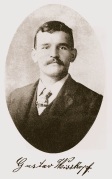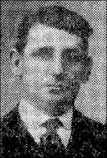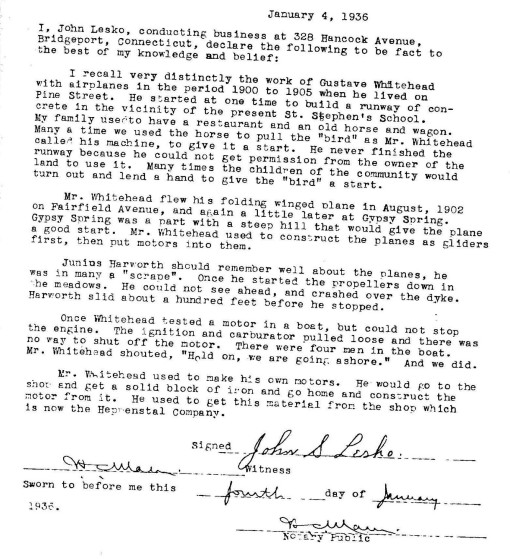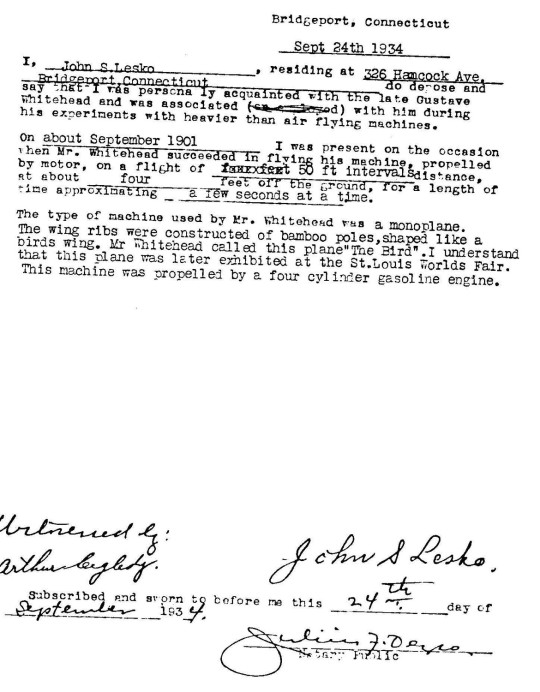Affidavit of John J. Lesko
I, John Lesko, conducting business at 328 Hancock Avenue, Bridgeport Connecticut, declare the following to be fact to the best of
my knowledge and belief:
I recall very distinctly the work of Gustave Whitehead with airplanes in the period 1900 to 1905 when he lived on Pine Street. He
started at one time to build a runway of concrete in the vicinity of the present St. Stephen’s School. My family used to have
a restaurant and an old horse and wagon. Many a time we used the horse to pull the “bird” as Mr. Whitehead called his
machine, to give it a start. He never finished the runway because he could not get permission from the owner of the land to use it. Many times the children
of the community would turn out and lend a hand to give the “bird” a start.
Mr. Whitehead flew his folding winged plane in August, 1902 on Fairfield
Avenue, and again a little later at Gypsy Spring. Gypsy Spring was a part with a steep hill that would give the plane a good start. Mr.
Whitehead used to construct the planes as gliders first, then put motors into them.
Junius Harworth should remember well about the planes, he was in many a “scrape”. Once he started the propellers down in the
meadows. He could not see ahead, and crashed over the dike. Harworth slid about a hundred feet before his
stopped.
Once Whitehead tested a motor in a boat, but could not stop the engine. The ignition and carburetor pulled loose and there was
no way to shut off the motor. There were four men in the boat. Mr. Whitehead shouted, “Hold on, we are going ashore.” And we
did.
Mr. Whitehead used to make his own motors. He would go to the shop and get a solid block of iron and go home and construct the motor from it. He used to get this material from the shop which is now the Heppenstal Company.
Signed and Witnessed, Jan. 4, 1936
I, John S. Lesko, residing at 326 Hancock Avenue, Bridgeport Connecticut do depose and say that I was personally acquainted with
the late Gustave Whitehead, and was associated with him during his experiments with heavier than air flying machines.
On about September 1901 I was present on the occasion when Mr. Whitehead succeeded in flying his machine, propelled by motor, on a flight of 50 ft intervals distance, at about four
feet off the ground for a length of time approximating a few seconds at a time.
The type of machine used by Mr. Whitehead was a monoplane. The wing ribs were constructed of bamboo poles shaped like a birds wing. Mr. Whitehead called this plane “The Bird”. I understand that this plane was later exhibited at the St. Louis Worlds Fair.
This machine was propelled by a four cylinder gasoline engine.
Signed and Witnessed, Sept. 24, 1934






